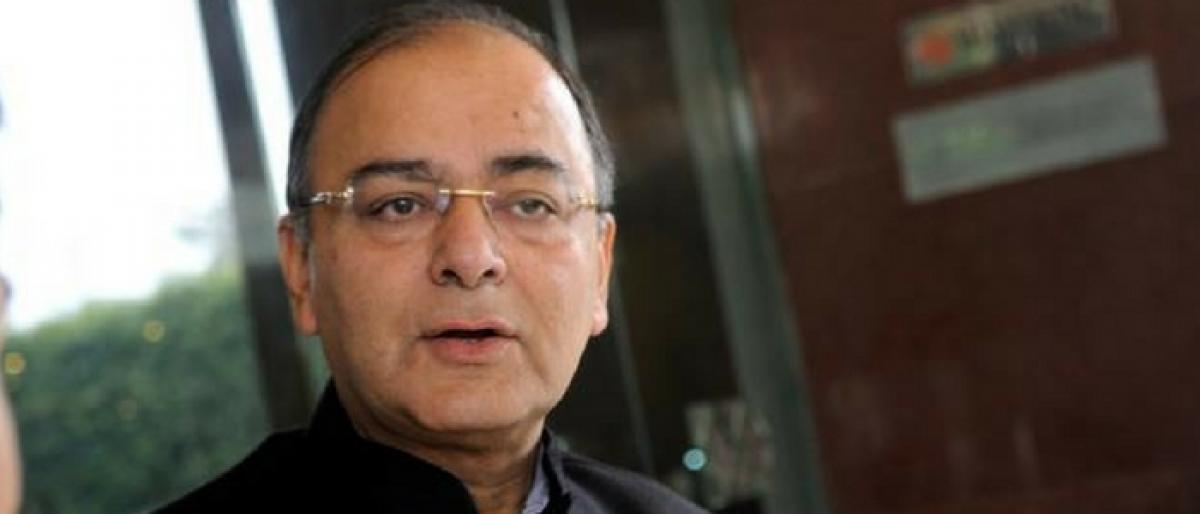Live
- Shehnaaz Gill embarks on a new journey with upcoming Punjabi film
- Babil Khan’s ‘Log Out’ to premiere at Mar del Plata International Film Festival
- Tamannaah relishes Lucknow’s famous ‘Malai Makhan’ during film promotions
- Amazon Boosts Anthropic Investment to $8 Billion for AI Development
- Suresh Raina applauds ‘Vijay 69,’ calls it Anupam Kher’s finest performance
- Congress Clinches Landmark Victory in Shiggaavi By-Elections
- Vidhu Vinod Chopra embraces realism
- Maharashtra election result reflects people's trust in PM Modi: Chandrababu Naidu
- Maharashtra has rejected Rahul Gandhi & Congress: Tamilisai Soundararajan
- Roads blocked with containers, army called in as Pakistan seals capital Islamabad ahead of PTI protest
Just In

The much-awaited and much-publicised Goods & Services Tax (GST) is a reality from today. Dubbed by many as a game-changer for the Indian economy, GSTsubsumes multitude of local taxes including value-added tax (VAT) that varied from State to State.
Listen to this Article:
It also replaced various central taxes, thereby simplifying tax structure and moving India to‘one- nation-one-tax’ regime.
The GST Council headed by Finance Minister Arun Jaitley and comprising State Finance Ministers, which met numerous times, zeroed in on four tax slabs of 5, 12, 18 and 28 per cent. As expected, food grains and daily use items were exempted from the new tax.
But only seven per cent of over 1,200 items in the tax list are in the exemption list, while 14 per cent have been placed in the lowest tax bracket of five per cent.Nearly 17 per cent items are taxed at 12 per cent, but a large chunk – about 43 per cent – of the products are in the standard tax bracket of 18 per cent. The Centre, therefore, claims that about 81 per cent of products and services attract 18 per cent or less tax, benefitting common people.
But there are several irritants as well. While plastic furniture and small cars used by common people will turn costlier, luxury cars will become cheaper. Fertilisers, textiles, ayurvedic products will cost more under GST, affecting millions of people.
However, the silver lining is that GST is expected to boost GDP growth by at least one percentage point and that’s going to be a huge gain for the country, apart from the uniform taxation.
But, India still has a long way to go in order to achieve single taxation across the country as envisaged while formulating the new tax laws. Petrol and liquor, which account for the major chunk of tax revenues for the States, are out of the new indirect tax regime.
It is unlikely that the States will be ready to lose control over these key tax revenue streams anytime soon. But without these two taxes in the new indirect tax regime, GST will remain incomplete.
However, the good tiding is that a beginning has been made and the central government is hopeful that States will be ready to bring petrol and alcohol under GST once they enjoy benefits of the uniform taxation. Centre is right in some way.
The new tax regime has been in the making for quite some time. Seeds for the new tax regime were sown nearly two decades ago when a committee was constituted in 2000 to study feasibility of GST for India. Subsequently, the Congress-led UPA government tried to bring in GST, but its attempts failed to yield positive results.
Finally, Narendra Modi-led NDA government succeededin enacting GST laws earlier this year. If the Central government’s efforts bear fruits, petrol and liquor will also be brought under the new tax regime.
That way, India will have uniform taxes across the nation if not single taxation. That in itself is a significant achievement for the country!

© 2024 Hyderabad Media House Limited/The Hans India. All rights reserved. Powered by hocalwire.com







